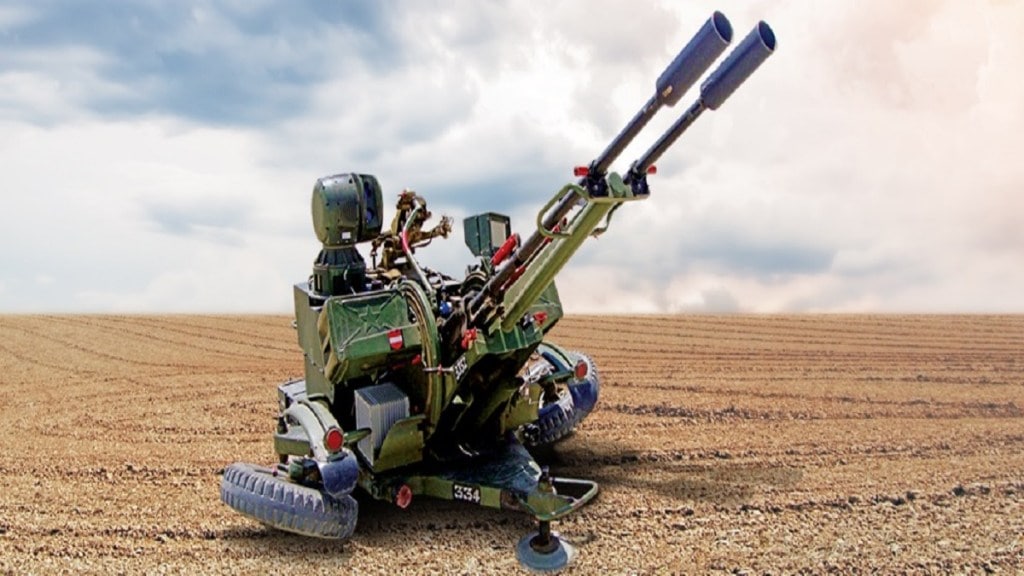Bharat Heavy Electricals Ltd (BHEL) has announced a partnership with Italy’s Leonardo S.p.A (formerly Finmeccanica) for the supply of air defence guns to the Indian Army.
A request for proposal for air defence guns was issued by the Ministry of Defence (MoD) in October last year. The proposal is for 220 air guns and 1.42 lakh rounds of ammunition. The estimated contract value is marked around Rs 6,500 crore.
According to the reports, there are three bidders for the air defence guns which include Larsen & Toubro and Advanced Weapons & Equipment India Ltd (AWEIL).
AWEIL which was earlier part of the Ordnance Factory Board (OFB) under the MoD, came into its new existence in 2021 post-corporatisation of OFB.
According to the government’s plan, the entire process is focused on developing such a system indigenously. Here, the inclusion of a foreign vendor – Italy’s Leonardo S.p.A – calls for more clarity.
As reported, in terms of the primary criteria, the bidders need to prepare a prototype of the weapon before the final approval with a contractual obligation for spares and maintenance for 25 years from the date of the agreement.
According to the BHEL’s notification, the Collaboration Agreement for Air Defence Gun (ADG) and Electro-Optical Fire Control System (EOFCS) is on a long-term basis to enable BHEL to design, engineer, manufacture and assemble.
India is developing a multi-layer air defence system which is aimed at intercepting all incoming aerial threats. The multi-layer air defence system is largely defined under various ranges from very short-range interception (less than 10 km) to long-range interception.
Indigenous guns with foreign tech
While BHEL has partnered with a foreign vendor, the other two bidders are relying on in-house capabilities.
Last year, in a similar requirement, Indian private defence conglomerate Larsen & Toubro emerged as the L1 (lowest bidder) for the Indian Air Force contract for about 240 air defence gun systems.
In this case, the indigenous air defence system also required a full-fledged air defence system which included the search radar to track radar with fire controls command control and electro-optics.
While the air defence guns for the IAF were a more complex system with two radars, the new RFP for the Indian army is rather simpler without radar.
This raises corners as the capabilities exist in India with the Indian private players then why would India need a foreign military vendor for technology transfers or collaborations?
Also, questions are raised on the continuing of large defence platforms/ systems given to the Defence Public Sector Undertakings (DPSUs) either through nomination or supporting in the process as being part of the government’s entities.
“We are still awaiting a large defence order this year while we have made a great deal of investment in our infrastructure,” said a senior leader of Indian private defence company.
“This kind of equipment ought to have been under the IDDM category. How else can indigenous design & development flourish?” he raises pertinent questions on building domestic military-industrial capabilities.
Buy (Indian-IDDM) category under the Defence Acquisition Procedure (DAP) 2020, refers to the acquisition of products from an Indian vendor that has been indigenously designed, developed and manufactured with a minimum of 50% Indigenous Content (IC) on the cost basis of the base contract price.
“In a nutshell, it is all about doing things in terms of design and development,” he explains.
The MoD & DRDO have been focusing on indigenous R&D and platforms indigenous R&D and platforms while creating several opportunities for the Indian private players.
However, this does not augur well when such an initiative is also opened to the foreign vendor, leveraging the “Buy & Make Indian” categorization which should have been under the IDDM category.
A dire need for AAD
The need for Army Air Defence (AAD) is critical as it was warned by the former army chief. In fact, in an estimate 97% of the Indian Army’s air defence gun missile systems (ADGMS) were ‘obsolete’ and in need of being upgraded or replaced, or both.
The majority of the inventory of weapon systems in AAD are legacy guns controlled by radars, such as single-barrel towed Bofors 40mm L/70 automatic guns, Russian Zu-23-2B-23MM twin-barrel autocannon guns and self-propelled Schilka weapon systems.
A quick resolve on the time approval of such contracts is the need of the hour amid the hostile environment that country in facing and where the responsibilities rest upon the Indian armed forces to act upon.

